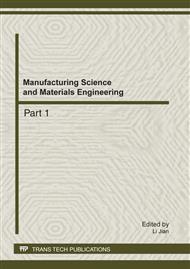p.688
p.694
p.700
p.705
p.709
p.713
p.719
p.724
p.731
Wind Turbine Generator Pitch Simulator’s Design
Abstract:
Based on the experiment platform consisted of DSPACE simulation system and wind power generator, it is introduced in this paper that Pan-Boolean algebra theory is applied to the wind turbine generator blade pitch simulator’s design. A new Pan-Boolean algebra control algorithm of wind turbine pitch simulator is described in this paper for the fist time. The simulation results show that the wind turbine blade pitch simulator can simulate a real wind power blade pitch adjustment process. This blade pitch simulator can be applied for various types of wind power system with blade pitch system. It is important for researches and applications on wind power.
Info:
Periodical:
Pages:
709-712
Citation:
Online since:
January 2012
Authors:
Keywords:
Price:
Сopyright:
© 2012 Trans Tech Publications Ltd. All Rights Reserved
Share:
Citation:


